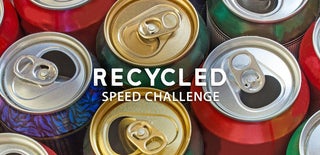Introduction: Fake Cardboard Brick Wall Fix
Have you ever wanted to make a wall match existing textures? What if there is missing brick and you only have 1/4" depth to work with? Slicing bricks into 1/4" pieces isn't really an option so... cardboard is my go-to for cosmetic repairs (only inside). We are cleaning up the front room in our makerspace (Fresno Ideaworks) and there was a flat area where the brick wall had ended and there was just drywall. I wanted to "patch" in bricks to blend with the existing bricks. Here is how I made fake bricks to repair the wall.
Supplies
*Cardboard
*Old dried spackle
*Newspaper and used paper towels
Wood glue
Primer paint and finish paint to match
Water
Scissors or utility knife
Paint brush 1" -1.5"
*Paint cup (cut recycled waterbottle works good)
Small bowl for paper mache liquid
Damp terry towel
Putty knife 1"
*recycled items
Step 1: Mix the Liquids
Use dried spackle that would otherwise be discarded. Someone usually leaves globs along the top edge of the pail. It won't matter in this project if it's a little lumpy.
1. Reconstitute the dried spackle. In a small bowl add just enough water to make it the consistency of creamy peanut butter.
2. For the paper mache paste: In a 2 to 4 cup bowl, mix about 1 tablespoons of spackle, with 2 tablespoons of wood glue in a cup of water. Mix thoroughly. It should be only slightly thick, a little runnier than salad dressing.
Step 2: Cardboard Bricks
Clean the wall.
Measure and cut the cardboard to match the size and shape of existing bricks. You can stack two cutouts for added thickness. Round the corners slightly to match original bricks.
Glue the bricks in place leaving the same gap as originals had for mortar. Any short bricks should have a short cardboard piece added to bring them to full length. Use paper mache (newspaper dipped in the paste) to attach the two pieces together.
Note: Any time you are gluing two things and want them to stick sooner, put a thin layer on each item (cardboard brick and wall) and let them dry separately. After they have dried, remoisten the dried glue with a little more glue and stick together. They should hold together easily now without much pressure. The pre-glue works as a sort of primer, preparing each surface to stick better.
Step 3: Adding Grout
After your bricks have dried on the wall (overnight is best), you need to add the grout/mortar. Use 1" strips of newspaper dampened in the paste. Crinkle and squish as you add them to the gaps. Match the height of original mortar. The mortar I was matching on my wall was mostly flush and sometimes higher than the bricks.
After giving the newspaper grout plenty of time to dry, you will be covering it with spackle. Using a brush makes it easier to fill the voids. You might need to water down your spackle to pancake batter consistancy. Don't be afraid to really blob it on, we want it to look like mortar, not crinkled newspaper.
Notice the distressing done to the bricks in the first photo. Dents and tears add the weathered look of the bricks. Texture was added with runny spackle (see next step).
Step 4: Primer to Check Progress
Once you have your cardboard bricks glued on, have added the newspaper grout/mortar, painted on spackle, and let everything dry... you will need to paint on primer to seal it and check your progress. A plastic water bottle cut in half makes a nice size paint cup for the primer.
You can add a little texture to the bricks by blotting the side of the brush onto the bricks with runny spackle (add a little water to spackle for a gravy consistancy).
Step 5: Troubleshooting Problems
The cardboard got too much moisture and wrinkled. Use the putty knife to add spackle over the ripples.
I ended up with bulges where I attached the short bricks to the short cardboard. I think this was because my paste was too watery. The newspaper lifted as it pulled away from the cardboard. I pulled off the bubbled layer and respackled.
Cracks in joints showed up where I respackled or put too thick of spackle in the grout. I paper mached over the cracks with paper towel dipped in the paste (thinned than newspaper so edges won't show).
Step 6: Final Touchup
You can knock down sharp edges or wipe with a damp towel (not too wet). But be careful not to make the bricks too smooth (I did this the first time, but then added a little texture with the grout).
Another coat of primer will let you check if all problems were fixed. If so, proceed to painting with the final color.
Step 7: Done...ish
Final wall looks pretty good. Still need to paint with final color. I only had time to finish the upper half so far.
This was a bit time consuming, but easier than the alternatives of using real brick and mortar. So what do you think? (be gentle, this is my first instructable) Have any questions?

Participated in the
Recycled Speed Challenge








